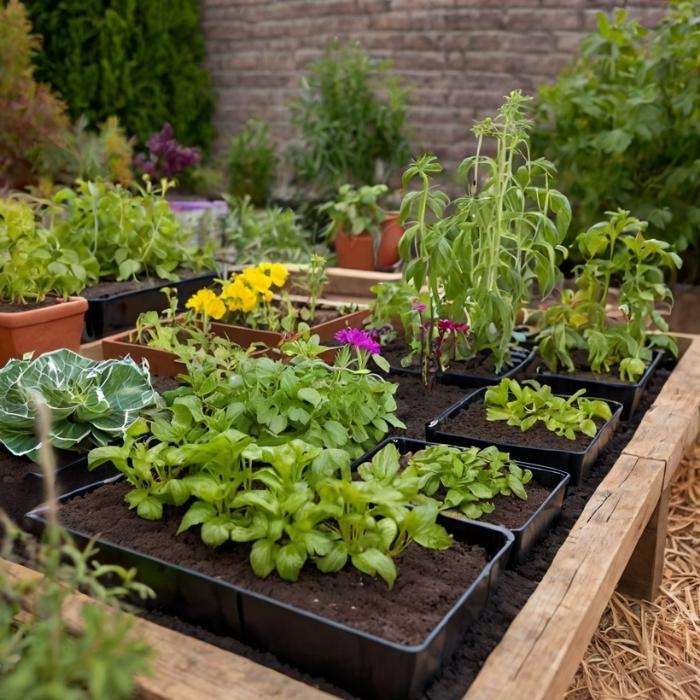The Ultimate Guide to Companion Planting: Boost Your Garden’s Health Naturally
Companion planting is an age-old gardening technique that harnesses the natural relationships between plants to create a thriving, productive, and pest-resistant garden. By strategically pairing plants that benefit each other, you can improve soil health, ward off pests, and even enhance the flavor of your crops. In this guide, we’ll explore the benefits of companion planting, popular plant pairings, and practical tips to make your garden flourish.
What Is Companion Planting?
Companion planting involves growing two or more plants together to enhance each other’s growth and health. These plant partnerships are based on principles of mutual benefit—whether it’s repelling harmful insects, attracting pollinators, improving nutrient uptake, or providing shade and support.
For instance, the “Three Sisters” method, a Native American planting tradition, combines corn, beans, and squash. The corn provides support for the beans, the beans enrich the soil with nitrogen, and the squash acts as a living mulch to suppress weeds and retain moisture.
Benefits of Companion Planting
Companion planting offers numerous advantages for both novice and experienced gardeners. Here are some of the key benefits:
1. Natural Pest Control
Certain plants can repel pests that might otherwise damage your crops. For example, marigolds are known to deter nematodes and aphids, while basil helps repel mosquitoes and whiteflies.
2. Improved Soil Health
Some plants, like legumes, fix nitrogen in the soil, enriching it for neighboring plants. Others, such as deep-rooted crops like carrots, can break up compacted soil, improving aeration and drainage.
3. Enhanced Growth and Yield
Plant pairings can boost each other’s growth. For example, tomatoes and basil are a classic duo. Not only do they complement each other in the kitchen, but basil also improves tomato growth and enhances its flavor.
4. Efficient Use of Space
Companion planting allows you to maximize garden space by combining plants with different growth habits. For instance, tall plants can provide shade for sun-sensitive crops, while low-growing plants can serve as ground cover.
5. Attracting Beneficial Insects
Flowers like calendula and cosmos attract pollinators such as bees and butterflies, which are essential for fruit and vegetable production. They also attract predatory insects like ladybugs that help control aphid populations.
Popular Companion Planting Pairings
Here are some tried-and-true companion planting combinations that you can use in your garden:
1. Tomatoes and Basil
- Why it works: Basil repels flies and mosquitoes, while its aromatic oils may deter tomato hornworms.
- Bonus: Basil enhances the flavor of tomatoes when grown nearby.
2. Carrots and Onions
- Why it works: Onions deter carrot flies, and carrots don’t compete with onions for nutrients due to their different root structures.
3. Corn, Beans, and Squash (Three Sisters)
- Why it works: Corn provides a natural trellis for beans, beans enrich the soil with nitrogen, and squash’s large leaves suppress weeds.
4. Cabbage and Dill
- Why it works: Dill attracts beneficial insects that prey on cabbage pests like aphids and caterpillars.
5. Lettuce and Radishes
- Why it works: Radishes grow quickly and loosen the soil for slower-growing lettuce, which benefits from the shade provided by radish leaves.
Plants That Don’t Get Along
While many plants thrive together, some combinations should be avoided due to competition for resources or allelopathy (chemical inhibition of one plant by another). Here are a few examples:
- Tomatoes and Corn: Both attract similar pests, such as corn earworms and tomato hornworms, making pest control more challenging.
- Carrots and Dill: Dill can stunt carrot growth if planted too closely.
- Beans and Onions: Onions can inhibit the growth of beans due to their strong chemical properties.
Practical Tips for Successful Companion Planting
- Plan Your Garden Layout Before planting, create a garden map to strategically place compatible plants together. Consider their growth habits, light requirements, and spacing needs.
- Rotate Crops Avoid planting the same combinations in the same spot every year. Crop rotation helps prevent soil depletion and reduces the risk of pest infestations.
- Use Companion Plants as Natural Borders Plant pest-repellent herbs like rosemary, thyme, or lavender around the perimeter of your garden to create a natural barrier against insects.
- Incorporate Flowers Add flowering plants like nasturtiums, calendula, or sunflowers to attract pollinators and beneficial insects. They also add a pop of color to your garden.
- Experiment and Observe Gardening is as much about experimentation as it is about following guidelines. Try different pairings and monitor how they perform in your specific environment.
Common Myths About Companion Planting
Myth 1: “Companion Planting Guarantees Pest-Free Gardens”
While companion planting can reduce pest issues, it’s not a silver bullet. Healthy soil, proper watering, and vigilant care are also essential for pest management.
Myth 2: “All Companion Planting Advice Works Everywhere”
The effectiveness of plant pairings can vary depending on your region, soil type, and climate. Always test combinations in your own garden.
Myth 3: “More Plants Mean Better Results”
Overcrowding can lead to competition for nutrients, water, and light. Balance is key when planning your companion planting strategy.
Final Thoughts
Companion planting is a powerful tool for creating a sustainable and thriving garden. By understanding the natural relationships between plants, you can boost growth, reduce pests, and enhance the overall health of your garden—all while enjoying the beauty and bounty it provides. Start experimenting with companion planting today, and watch your garden flourish like never before!

